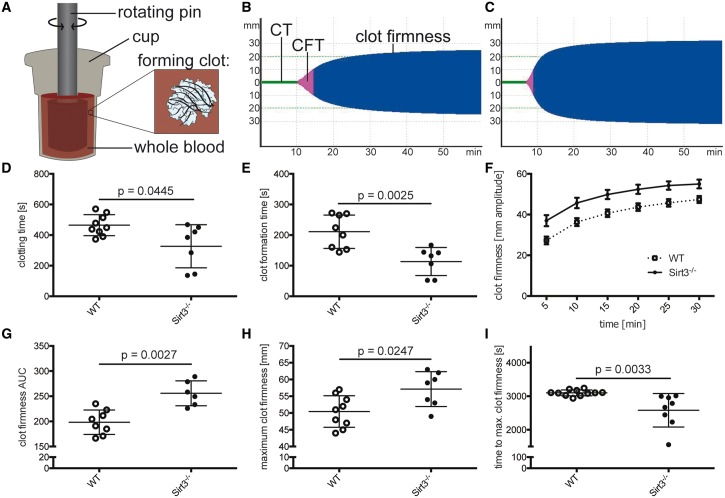Figure 2.
Loss of Sirt3 accelerates blood clotting and clot firmness ex vivo. Whole blood coagulation was assessed using rotational thromboelastometry (ROTEM) (A). Once the blood started to coagulate, the rotation of the pin was restricted and the kinetics translated to a TEMogram. Representative pictures show the TEMogram from WT (B) compared to Sirt3−/− whole blood (C). Sirt3−/− blood revealed an earlier onset of clotting (D) and reached a predefined clot firmness earlier than control mice (E). Furthermore, blood of Sirt3−/− animals showed increased clot firmness throughout the experiment (F–H) and maximum clot firmness was reached earlier (I). n ≥ 6, Student’s t-test was used in graph (D) and (I), Mann–Whitney test was applied in graphs (E), (G), and (H). CT, clotting time (time until initiation of clotting); CFT, clot formation time (time between initiation of clotting and a clot strength of 20 mm amplitude).

